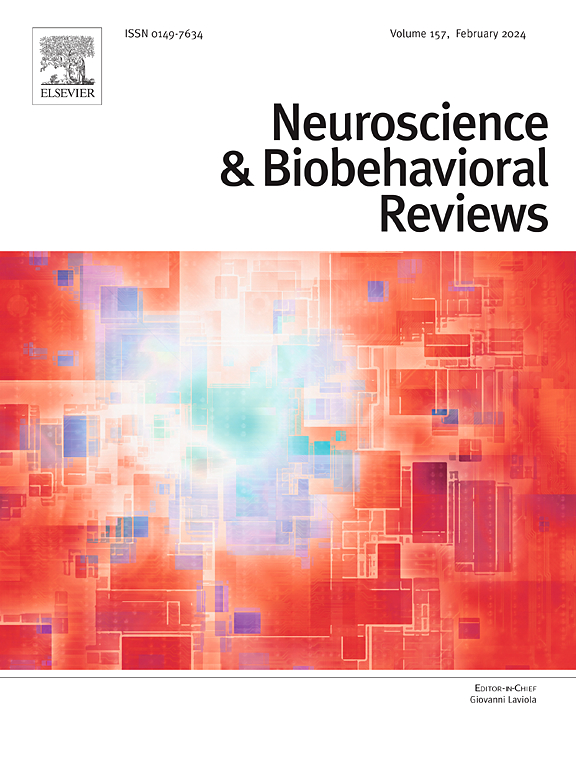Touch facilitates newborns’ self-regulation: Systematic review of multidimensional arousal outcomes
IF 7.9
1区 医学
Q1 BEHAVIORAL SCIENCES
引用次数: 0
Abstract
During the first month of life, exchanges between newborns and caregivers focus on helping babies regulate their physiological and behavioural states. Touch and bodily contact play a special role in facilitating arousal regulation and are often used to promote bonding, support at-risk babies, and manage pain. Here, we systematically review the extant evidence on the effects of touch interventions for newborns, specifically focusing on self-regulation and arousal as outcome measures. Seventy-two experimental studies met our inclusion criteria, comparing touch and control groups or within-subject conditions across a variety of physiological and behavioural outcomes. The types of touch interventions employed include skin-to-skin care, Kangaroo Care, massage therapy, Gentle Human Touch, and Yakson. Outcome measures include heart rate and heart rate variability, blood oxygenation and respiration rate, body temperature regulation, cortisol levels, and behavioural states (e.g., sleep and crying patterns). Most studies implemented touch interventions on premature babies and measured outcomes within the first month of life. Only a minority monitored the long-term effects of interventions or explored facilitating factors such as multisensory aspects, caregiver satisfaction, and sensitivity to the baby’s signals. Overall, the findings consistently show the benefits of touch in promoting the immediate self-regulation skills of newborns, particularly supporting the use of tactile interventions for premature babies and neonatal pain management in clinical contexts. Future research should further investigate the long-term, cascading effects of touch interventions on broader dimensions of child development and the child-caregiver dyad’s well-being as a whole.
触摸促进新生儿自我调节:多维唤醒结果的系统回顾。
在生命的第一个月,新生儿和照顾者之间的交流主要集中在帮助婴儿调节他们的生理和行为状态。触摸和身体接触在促进觉醒调节方面起着特殊的作用,通常用于促进联系,支持有风险的婴儿,以及控制疼痛。在这里,我们系统地回顾了现有的证据触摸干预对新生儿的影响,特别关注自我调节和唤醒作为结果测量。72项实验研究符合我们的纳入标准,比较了接触组和对照组或受试者内部的各种生理和行为结果。所采用的触摸干预类型包括皮肤对皮肤护理、袋鼠式护理、按摩疗法、温柔的人类触摸和雅克森。结果测量包括心率和心率变异性、血氧和呼吸速率、体温调节、皮质醇水平和行为状态(如睡眠和哭泣模式)。大多数研究对早产儿实施触摸干预,并在出生后的第一个月内测量结果。只有少数人监测干预措施的长期效果或探索促进因素,如多感官方面,照顾者满意度和对婴儿信号的敏感性。总的来说,研究结果一致表明触摸在促进新生儿即时自我调节技能方面的好处,特别是支持在临床环境中对早产儿和新生儿疼痛管理使用触觉干预。未来的研究应该进一步调查触摸干预对儿童发展更广泛维度的长期级联效应,以及儿童照顾者双方的整体幸福感。
本文章由计算机程序翻译,如有差异,请以英文原文为准。
求助全文
约1分钟内获得全文
求助全文
来源期刊
CiteScore
14.20
自引率
3.70%
发文量
466
审稿时长
6 months
期刊介绍:
The official journal of the International Behavioral Neuroscience Society publishes original and significant review articles that explore the intersection between neuroscience and the study of psychological processes and behavior. The journal also welcomes articles that primarily focus on psychological processes and behavior, as long as they have relevance to one or more areas of neuroscience.

 求助内容:
求助内容: 应助结果提醒方式:
应助结果提醒方式:


